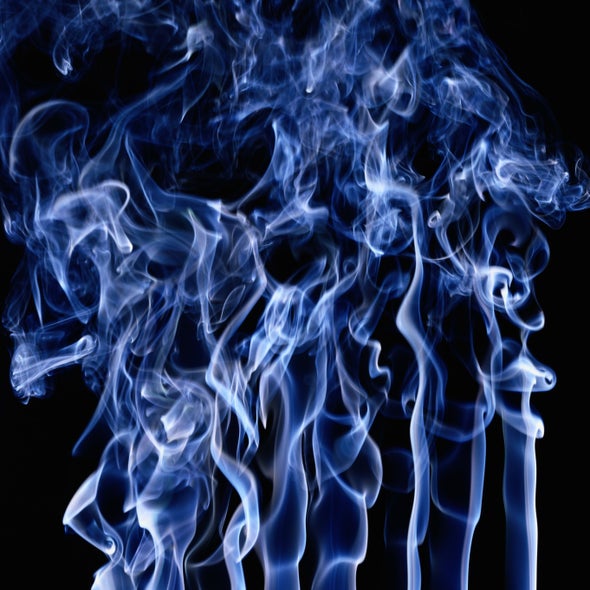(单词翻译:单击)
听力文本
This is Scientific American's 60-second Science, I'm Steve Mirsky.
A year ago I reported on a study about an increase in fatal traffic accidents on April 20th, 4/20—a date considered somewhat of a holiday by marijuana aficionados. That study was in the journal JAMA Internal Medicine and it used data from the U.S. National Highway Traffic Safety Administration. The researchers looked at fatal accidents on 4/20 between 4:20 P.M. and 11:59 P.M. from 1992 to 2016, and they compared that date's data with the day one week before and one week after. They found a 12 percent increase in the relative risk of a fatal traffic accident after 4:20 PM on April 20—4:20 P.M. being the time that a lot of pot smokers like to light up on 4/20.
The paper caught the attention of McGill University epidemiologists Sam Harper and Adam Palayew.
"I should say, at first I thought the paper was intriguing."
Sam Harper, on the phone from Montreal.
"I think the most fundamental difficulty with the JAMA paper was really the large magnitude of the effect size, given what we already know about impaired driving, so ... in order to increase the national rate of fatal accidents by something like 12 percent would require either a really large segment, as much as 15 percent of the population, to be driving while high after 4:20 P.M. on 4/20, or really, really incredibly high relative risks of driving after the kind of cannabis consumption that you might have had on 4/20. So I think this was actually a hard case to make substantively."

Harper and Palayew decided to dig deeper.
"So one way to test this is to see whether this elevated risk persists if you compare 4/20 not just to the same day one week before and after, but, for example, to the same day two weeks before and two weeks after—or to every other day of the year—and that's part of what we did. And when we did these sorts of additional tests we found very little evidence of any elevated risk on 4/20."
"And then the last thing we did was we also looked at this question of whether certain days showed persistently high risks year after year. I mean that's another way of trying to assess whether or not something is really robust. So again, when we did this we found very little evidence that there is any kind of sustained effect of 4/20—not even for recent years when I think this has become a more popular event."
"But you know, very well-established holidays like July 4th, weekends around Thanksgiving and Labor Day, these things show very reliable excess risks of fatal crashes basically every year since the data started being collected in 1975."
Harper is careful to say they were not "debunking" the original research.
"That's not the way I see it. I see it as these guys had an interesting idea, and now what we did was poke a little more deeply, look at it a little bit more carefully, and maybe we find it's not so robust. And that's kind of interesting—that's the way the process should work, I hope."
For Scientific American — 60-Second Science. I'm Steve Mirsky.
参考译文
这里是科学美国人——60秒科学系列,我是史蒂夫·米尔斯基。
一年前,我报道了一项关于4月20日下午4点20分致命交通事故增加的研究。4月20日被大麻爱好者视为假日。这项研究发表在《美国医学会杂志·内科学》上,其使用的数据来自美国国家公路交通安全管理局。研究人员观察了1992年至2016年4月20日下午4点20分至晚上11点59分之间的致命交通事故,他们将4月20日的数据与那一天前后一周的数据进行了比较。他们发现,4月20日下午4点20分之后致命交通事故的相对风险上升了12%,而下午4点20分是许多吸食大麻者在4月20日点烟的时刻。
这篇论文引起了麦吉尔大学流行病学家萨姆·哈珀和亚当·帕莱休的注意。
“我应该说,起初我认为这篇论文很有趣。”
萨姆·哈珀从蒙特利尔连线时说到。
“我认为《美国医学会杂志》上这篇论文最根本的争议在于非常大的效应值,考虑到我们已经了解危险驾驶的情况,那要使全国致命事故率增加12%,要么需要多达15%的人口在4月20日下午4点20分吸食大麻后驾驶,要么就是人们在4月20日吸食大麻后驾驶的相对风险极高。因此我认为这是在实质上很难出现的情况。”
哈珀和帕莱休决定深入研究。
“因此,检验这一结果的一种方法是,不只是将4月20日与前后一周的日子进行比较,还要与前后两周的日子或是与同一年每隔一天的日子进行比较,看看这种风险增加情况是否会持续。这就是我们所做的。我们进行这种附加测试时发现,几乎没有证据表明4月20日会出现任何风险上升的情况。”
“我们做的最后一件事是,我们还研究了这个问题:某些日子是否会年复一年地显示出持续的高风险。我认为这是试图评估某事物是否真的坚固的另一种方法。我们这样做时再次发现,很少有证据能证明存在持续的4月20日效应,即使是在最近几年也没有,我认为这在最近已经成为更受欢迎的事件。”
“但你知道,像美国独立日、感恩节周末和劳动节这样的传统节日,基本上自1975年开始收集数据以来,每年都显示出致命车祸的可靠上升风险。”
哈珀谨慎地表示,他们不是在“驳斥”原有研究。
“这并不是我对这项研究的看法。我认为这些人提出了一个有趣的想法,现在我们所做的就是更深入地探究和更仔细地观察,也许我们会发现该研究并不是那么坚固。这很有趣,我希望这是该过程运作的方式。”
谢谢大家收听科学美国人——60秒科学。我是史蒂夫·米尔斯基。
译文为可可英语翻译,未经授权请勿转载!
重点讲解
重点讲解:
1. light up 点烟;开始吸烟;
He held a match while she lit up.
他拿了根火柴为她点烟。
2. at first 最初;起初;开始时;
At first I scoffed at the notion.
刚开始我对那种想法嗤之以鼻。
3. in order to 为了;以便;目的在于;
In order to ensure success we must have a complete and thorough plan.
为了保证成功,我们必须要有一个周密的计划。
4. be careful to do sth. 小心的;仔细的;谨慎的;
He was always careful to avoid embarrassment.
他总是小心谨慎地避免尴尬。


